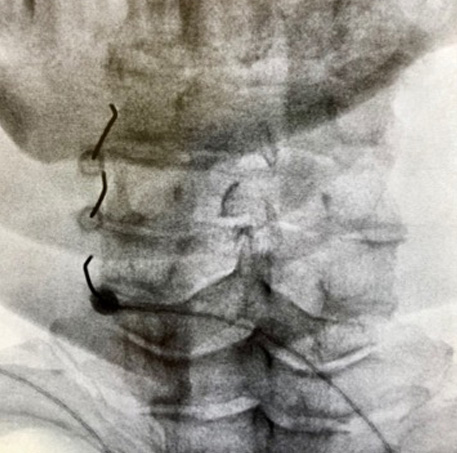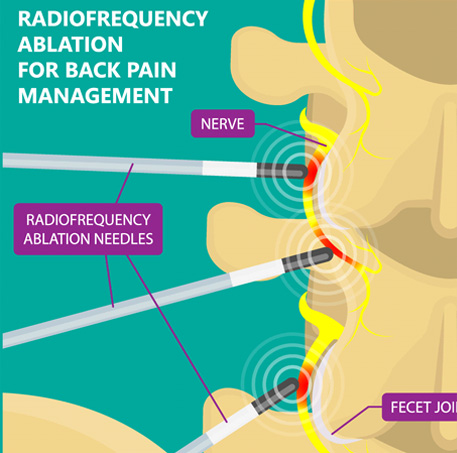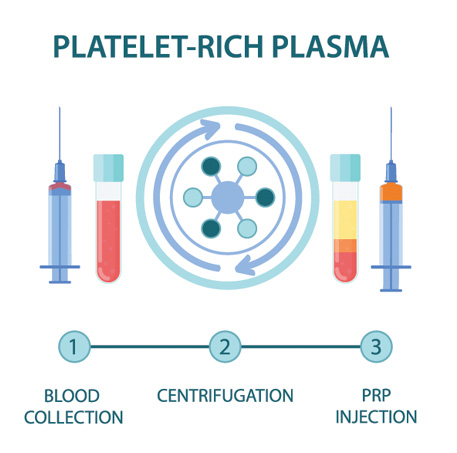Cervical Facet Joint Pain
What is cervical facet joint pain?
The cervical facet joints are small joints at the posterolateral aspect of the cervical spinal column. Their primary role is to help bear load through the cervical spine. Similar to a hip, knee, or shoulder joint, the cervical facet joints can be a source of pain. Depending on which joints are painful, the pain may be felt in various parts of our neck and surrounding regions. For example, if the C5-6 facet joint is emanating pain, a patient may experience pain at the neck that can also be referred to the upper trapezius and superior aspect of the scapula (shoulder blade). If the C2-3 facet joint is emanating pain, a patient may experience pain at the neck that can also be referred to the occipital region (back of the head), causing both neck pain and headache.
What causes cervical facet joint pain?
The two most common causes of cervical facet joint pain are degenerative/arthritic changes or trauma. Similar to when people begin to feel knee pain as the joint degenerates and becomes arthritic, the cervical facet joints can become painful with time as they degenerate and become arthritic. Alternatively, the cervical facet joints may become a source of pain after a traumatic event such as a motor vehicle collision, sports injury, or any other forceful impact.
How is cervical facet joint pain diagnosed?
A diagnosis of cervical facet joint pain is primarily based on a patient’s symptoms and physical examination findings. Typical symptoms and signs of cervical facet joint pain include neck pain with referral of pain to the occipital region (back of the head), upper trapezius, or scapula (shoulder blade). While imaging such as x-ray, magnetic resonance imaging (MRI), or computed tomography (CT) may be useful to evaluate for other potential sources of neck pain, rule out more serious issues such as fractures, tumors, or infections, and help plan procedural approach, there is actually very limited data to suggest that imaging plays a role in being able to more conclusively rule in or rule out the facet joints as a source of pain. Consequently, the gold standard method for diagnosis of cervical facet joint pain is patient response to diagnostic medial branch nerve blocks.
How is cervical facet joint pain treated?
Initial treatment options for management of cervical facet joint pain may include medications, physical therapy, and/or chiropractic. In many cases, these conservative measures will allow for good recovery. If a patient is still experiencing significant pain despite the aforementioned treatment options, cervical medial branch blocks can be considered to more precisely identify the facet joints as the primary source of pain. This can also provide information about patients who may be good candidates for treatment of the facet joint pain with radiofrequency ablation (RFA). Alternative interventional options may include facet joint injections with corticosteroids or platelet-rich plasma (PRP).
Cervical Medial Branch Blocks and Radiofrequency Ablation
When a person’s facet (zygapophysial) joints are emanating pain, the medial branch nerves will sense this pain signal and transmit it along a pathway to the spinal cord and up to the brain where we interpret and “feel” that painful sensation. As such, medial branch nerve blocks can be used as a diagnostic injection to help determine whether or not the facet joints are the primary source of pain. Using x-ray (fluoroscopic) guidance, needles are safely guided to and placed near the medial branch nerves which are then anesthetized, thus temporarily blocking the pain coming from the facet joints. Patients are then asked to monitor their typical pain during the time period that the local anesthetic is blocking the facet joint pain. In patients who experience a significant improvement in their pain, it increases the likelihood that the facet joints are the main source of pain and radiofrequency ablation (RFA) can be performed as a treatment to provide long lasting improvement in the pain. In patients who do not experience much improvement in their pain during the anesthetic phase, it can be determined with much more certainty that the facet joints are not the main source of the pain and the focus can shift to other potential pain generating structures.

After a patient has undergone medial branch nerve blocks to more precisely determine that the facet joints are the primary source of pain, radiofrequency ablation (RFA) can then be performed. With RFA, the needle tips are placed in close proximity to the medial branch nerves (the nerves that supply sensation to the painful facet joints). The needle tips are then warmed up to a temperature that causes coagulation or “cauterization” of the medial branch nerves. This disrupts the nerves that sense the pain coming from the facet joints and, consequently, disrupts the pathway for that pain to be sensed and transmitted to the brain. In the end, RFA can provide long lasting improvement in facet joint pain, typically 9-18 months at a time, and repeat RFA procedures can be performed time and again to allow for ongoing pain relief for patients.

Platelet Rich Plasma (PRP) injection
PRP is component of the patient’s own blood. It is rich in growth factors and other cells that signal an increased healing response to a damaged tissue. It is used to treat a variety of painful spine and musculoskeletal conditions.
Blood is drawn from a patient and then placed in a centrifuge for it to be “spun down.” This causes the different components of the blood to separate out in the vial. The PRP solution is then drawn up into a syringe and prepared to be injected at the site of the patient’s injury.

Discontinue use of all non-steroidal anti-inflammatory drugs (NSAIDs) at least 7 days prior to the procedure. These may include ibuprofen (Advil, Motrin), naproxen (Aleve), meloxicam (Mobic), diclofenac (Voltaren), indomethacin (Indocin), and celecoxib (Celebrex). If you are taking oral corticosteroids such as prednisone or a Medrol Dosepak, please discuss this with Dr. Best prior to your procedure. In some cases, Dr. Best may request that the corticosteroid medication be discontinued in preparation for the PRP injection. Do NOT stop aspirin unless specifically instructed by Dr. Best. Depending on which body part is injected, you may need a driver or alternative form of transportation to and from your procedure. If you have any questions or concerns about whether to continue or discontinue any of your medications leading up to your PRP injection, please discuss these issues with Dr. Best and his team.
Once the PRP solution is created, the patient is positioned for the procedure. The skin is thoroughly cleaned and the target for the injection obtained with ultrasound or fluoroscopy (x-ray). Then, a numbing solution is injected at the skin and subcutaneous tissues for increased procedural comfort. Finally, under ultrasound or fluoroscopic (x-ray) guidance, the needle is guided to the injury site and the PRP solution is deposited.
It is common to experience mild to moderate pain or discomfort during the initial 0-3 days after the PRP procedure. Post-procedure pain can be easily managed with acetaminophen (Tylenol) or other non-NSAID pain medication. Try to avoid applying ice or heat to the injection site.
During the 3–14-day period after the PRP injection, you may gradually increase physical activity. Please continue to avoid use of NSAIDs; however, ice may be applied for short periods of time throughout the day to aid in management of post-procedure soreness/discomfort if present.
During the 2–4-week period after the PRP, Dr. Best may recommend initiation of a course of physical therapy to aid in recovery and optimization of healing. The patient may begin to note improvement in pain during this time period, though it often takes one month or more for the benefits of PRP to take hold.
At this time, PRP injections are not typically covered by any insurance companies. Pricing and payment options can be discussed with Dr. Best and his team prior to your procedure.
As an alternative to PRP injections, cervical facet joint injections with corticosteroid can be performed to help alleviate neck (cervical region) pain. Using x-ray (fluoroscopic) guidance, needles are carefully and precisely guided to the painful facet joints. Once the facet joints have been accessed, a steroid solution is instilled through the needle and into the joints. This helps to decrease inflammation and, subsequently, decreases pain and improves function.
At a Glance
Dr. Craig Best
- Harvard Fellowship-Trained Interventional Spine & Sports Medicine Specialist
- Double Board-Certified in Physical Medicnie & Rehabilitation and Pain Medicine
- Assistant Professor of Physical Medicine & Rehabilitation and Orthopedic Surgery
- Learn more

